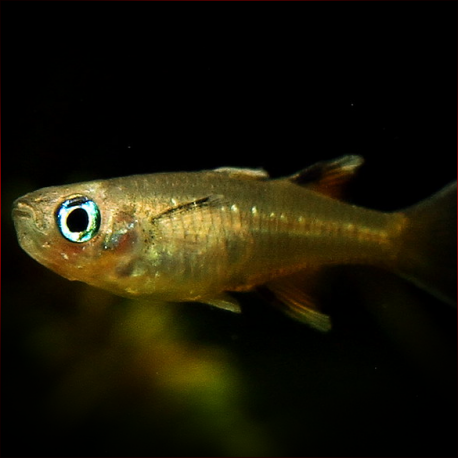More info
Datasheet
| Minimum Tank Size | 60 litres / 15.85 US gallons |
| Maximum Size | 7.0cm / 2.76inches |
| Temperature | 20°C / 68.00°F - 26°C / 78.80°F |
| Hardness | 5.04dgH / 90ppm - 15.02dgH / 268ppm |
| pH | 6.5-7.5 |
General Description
The Pacific Blue-Eye, scientifically known as Pseudomugil Signifer, is a species belonging to the Atheriniformes order. This fish, with a maximum length of 7.0cm, is widely distributed along the eastern coastline of Australia, exhibiting variability in color patterns, body sizes, and fin morphologies among different populations.
Aquarium Setup
For optimal care, a 60-liter tank is recommended, densely planted with floating plants and driftwood to mimic a natural habitat. It is advisable to include fine-leaved aquatic moss for breeding purposes. Maintaining well-oxygenated water with a slight flow is essential, and stability in water chemistry is crucial to prevent stress.
Behaviour
Generally peaceful, the Pacific Blue-Eye thrives in groups of at least 8-10 individuals, promoting natural shoaling behavior and reducing stress. Males display vibrant colors and compete for female attention, exhibiting fascinating territorial behaviors during spawning periods. In smaller tanks, aggression amongst males can be intense during breeding times.
Feeding and Diet
Feeding primarily on zooplankton, phytoplankton, and invertebrates in the wild, this species should be offered live foods like Daphnia, Moina, Artemia nauplii, and micro worms in captivity. Acceptance of small crushed dried foods is also observed, ensuring a varied diet to maintain optimal health.
Reproduction & Dimorphism
Pacific Blue-Eyes are egg scatterers, showing no parental care. Spawning occurs with females depositing eggs on aquatic vegetation. Males, larger and more colorful than females, exhibit extended unpaired fins when mature. Some populations display unique physical traits like filamentous fin tips that are lost in captivity.
Habitat and Distribution
Found in a variety of habitats from marine to freshwater environments, Pacific Blue-Eyes prefer coastal mangrove creeks, swamps, and salt marshes. Their range extends from the Cape York Peninsula in Queensland to southern New South Wales. Localized differences in coloration and morphology exist, reflecting adaptation to diverse habitats within their distribution range.

